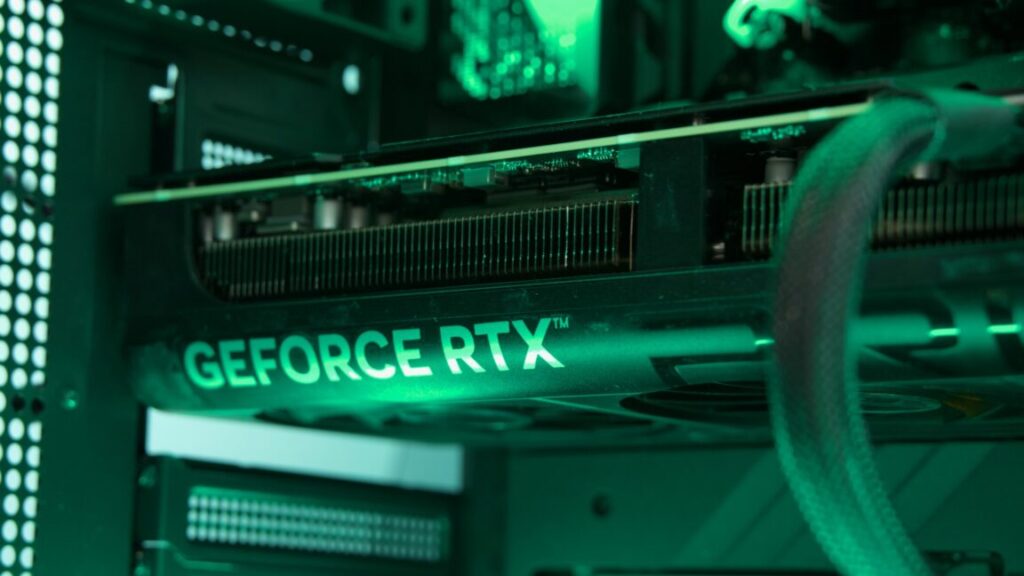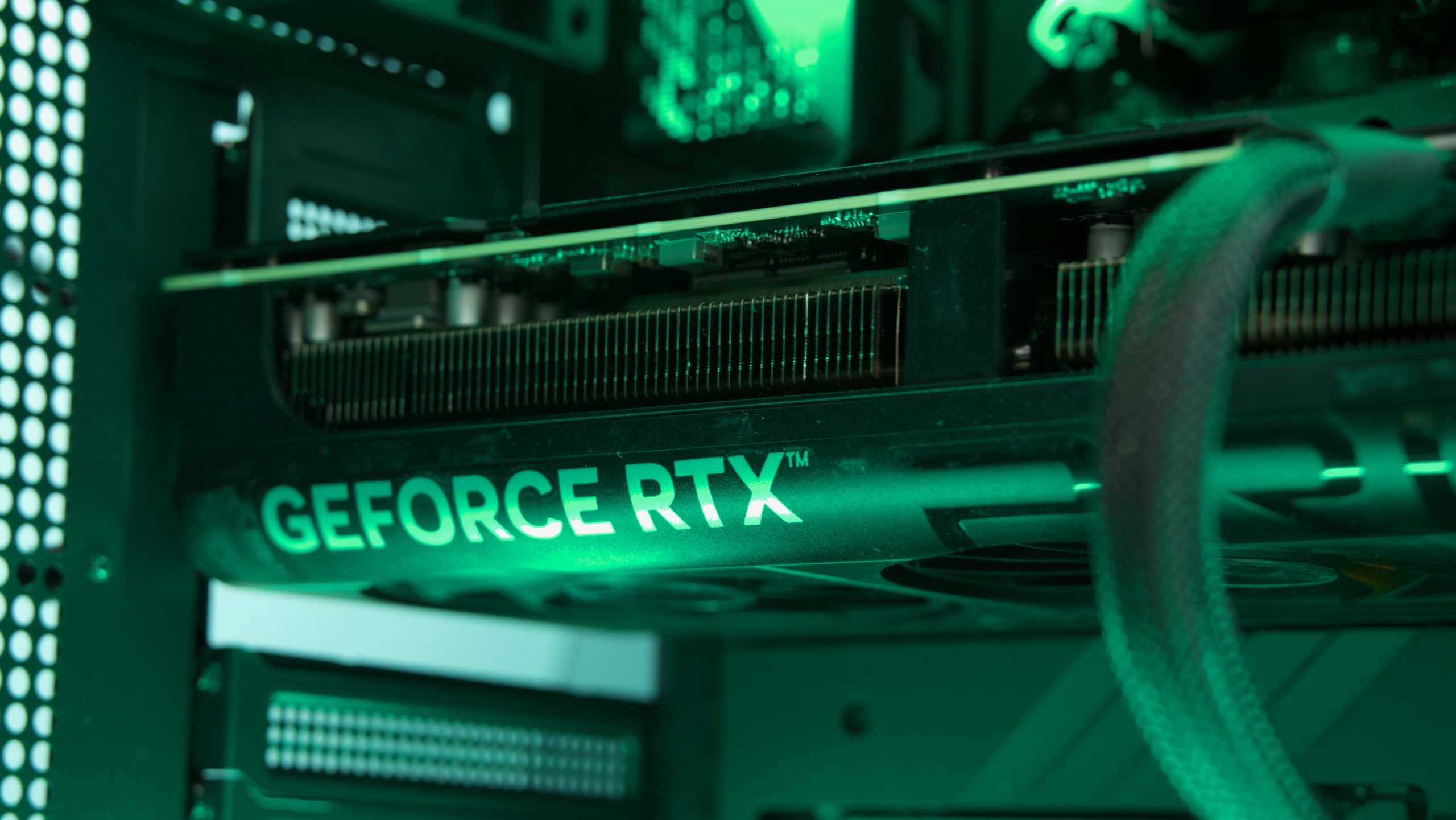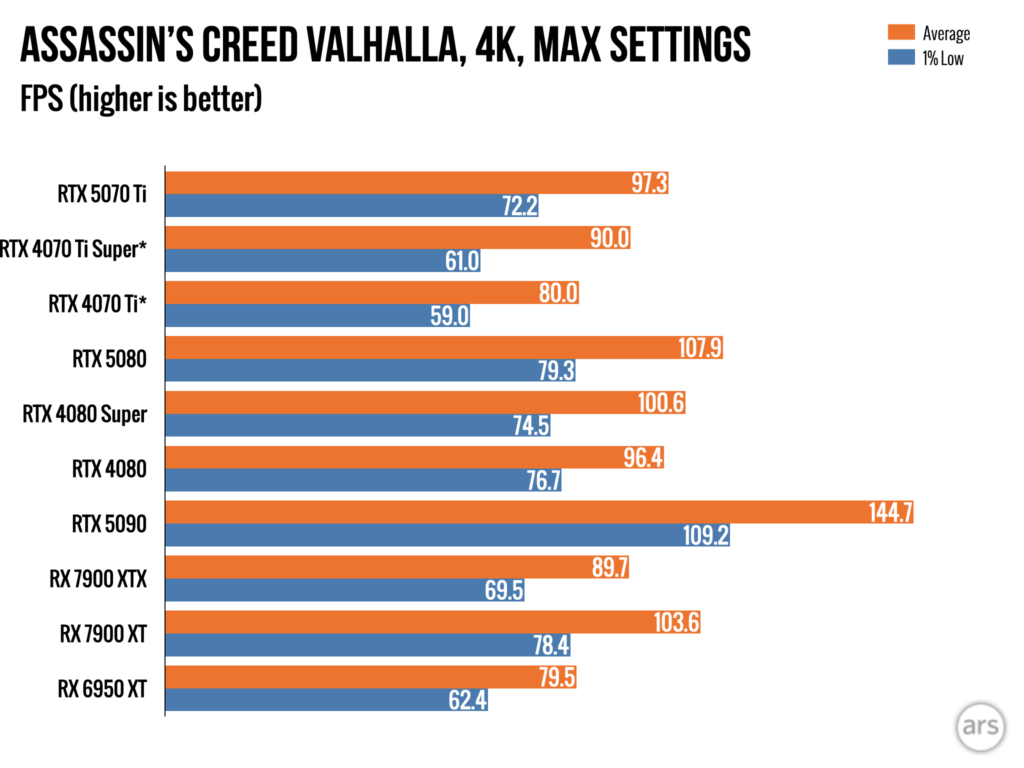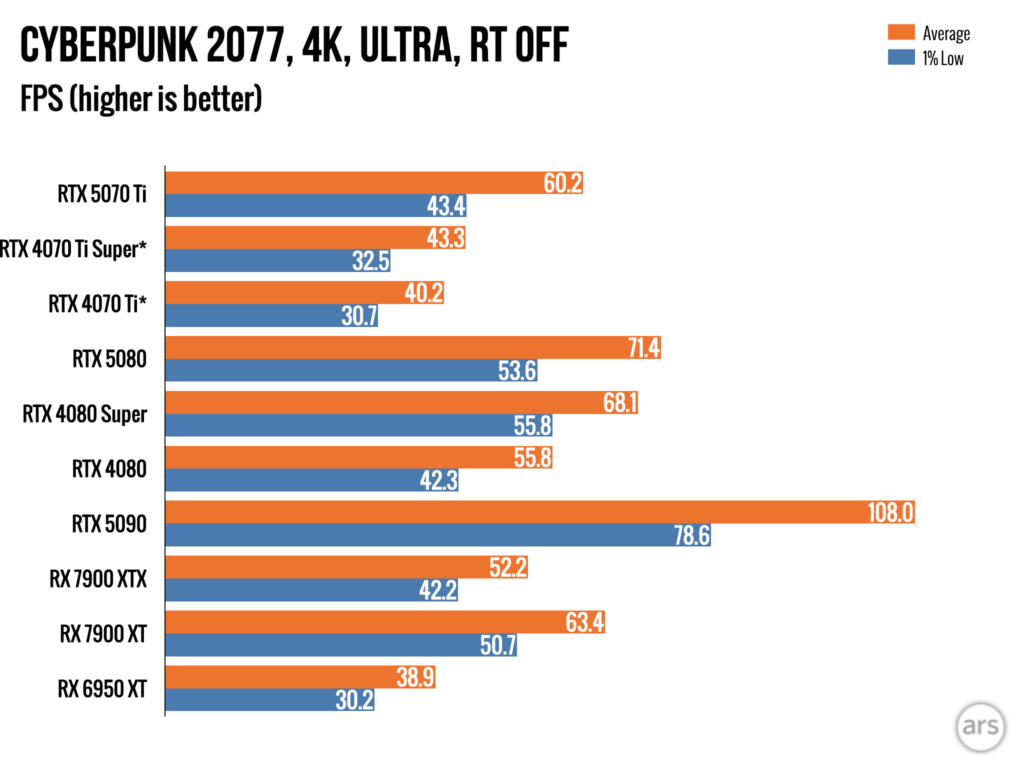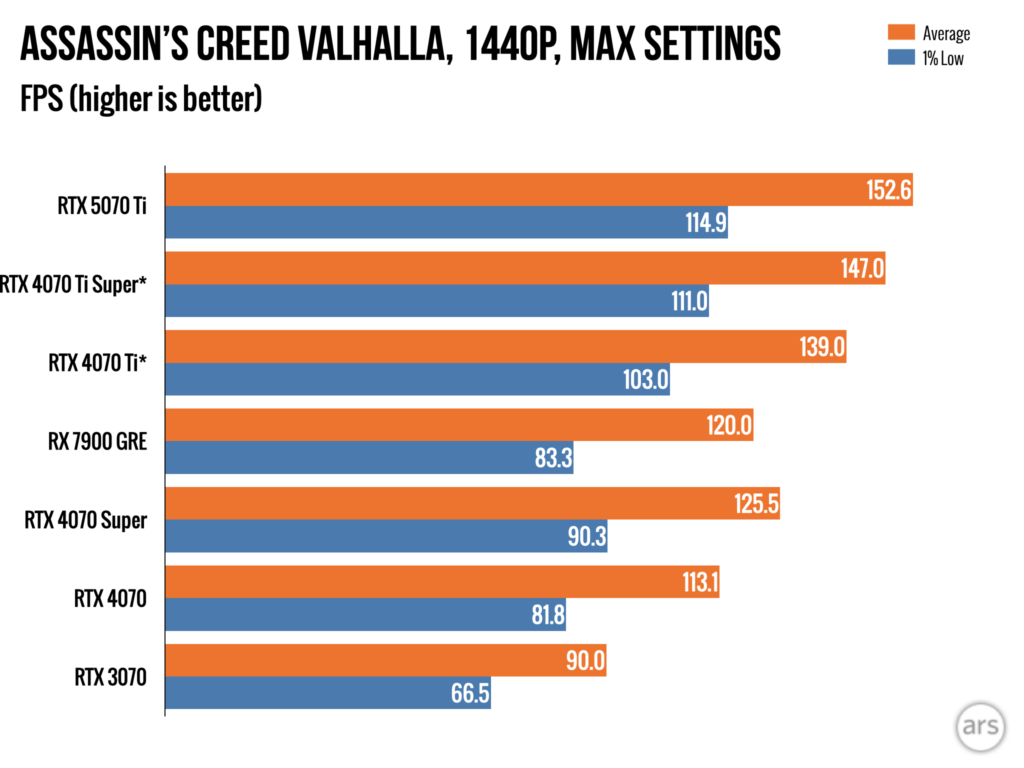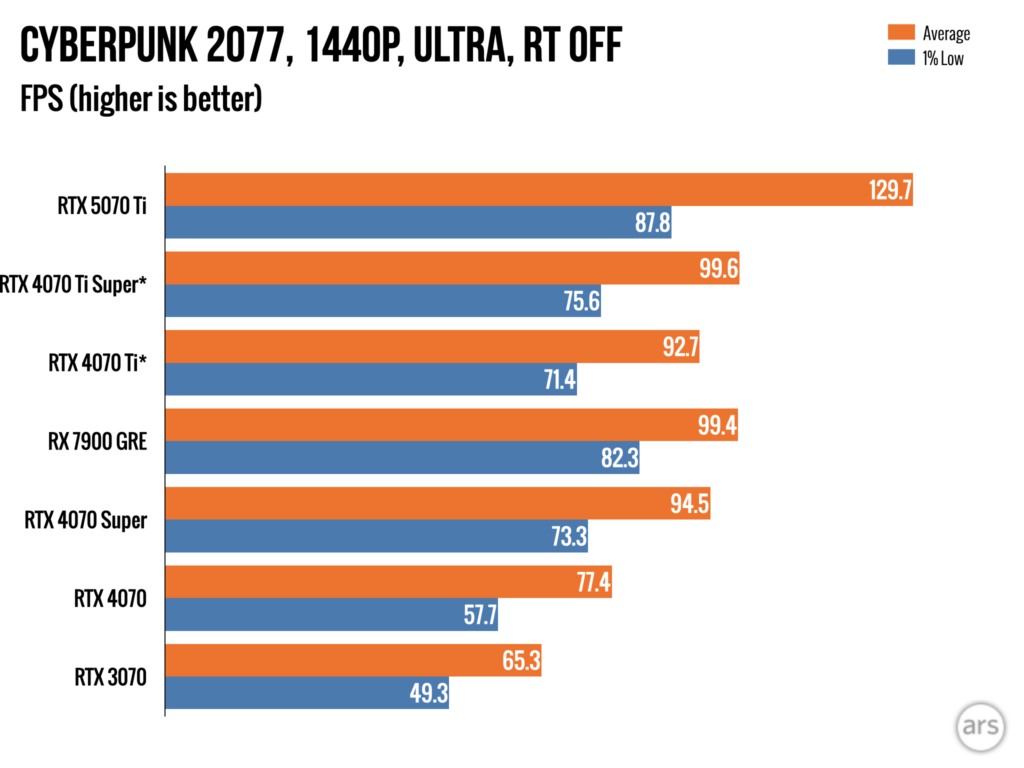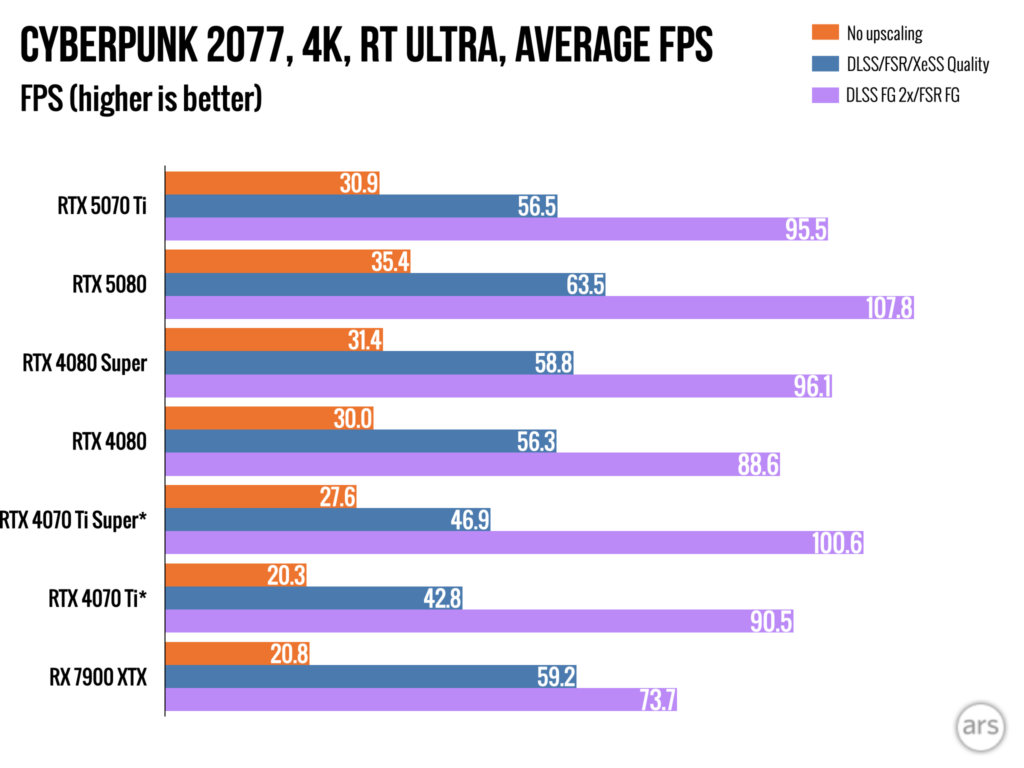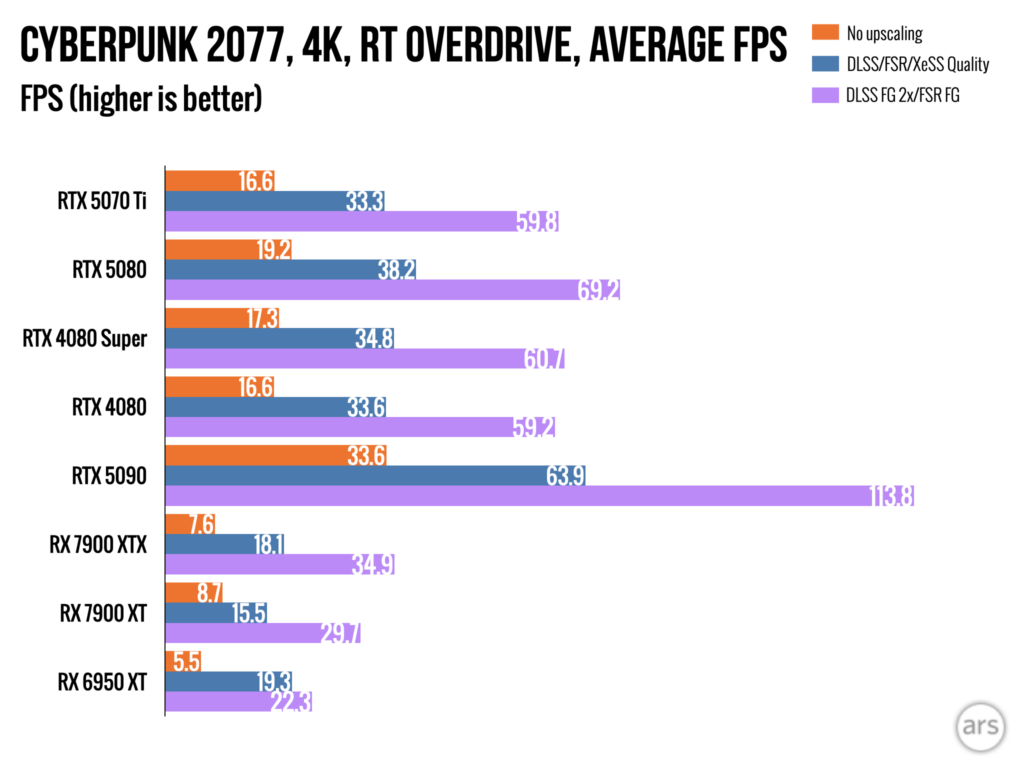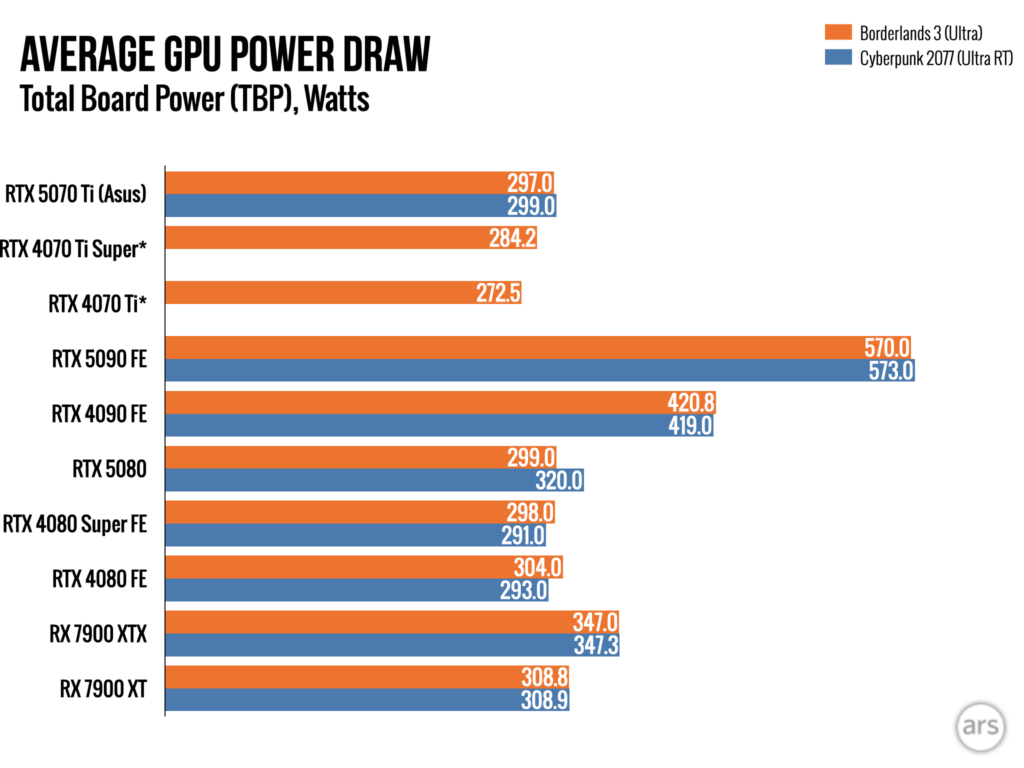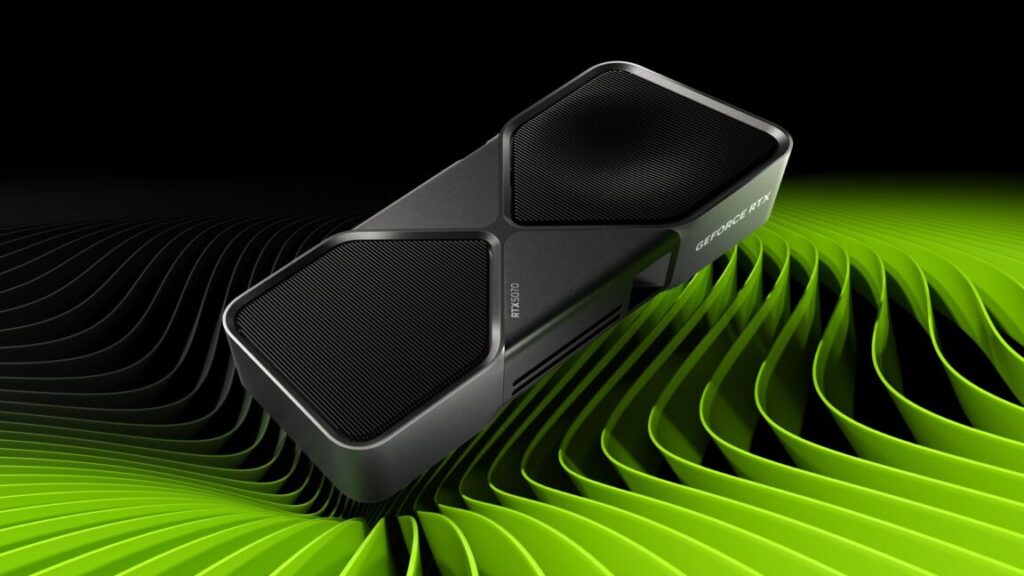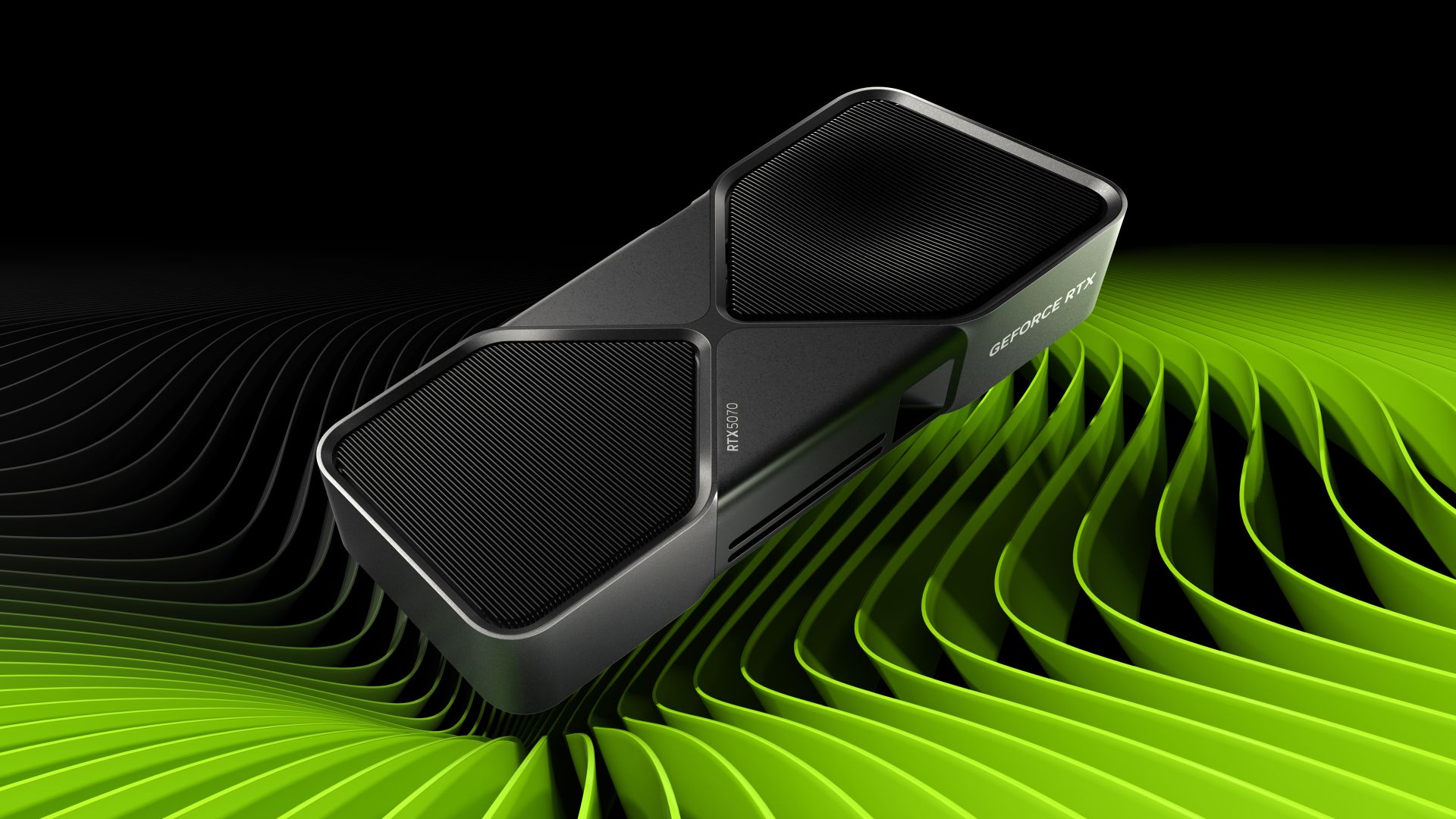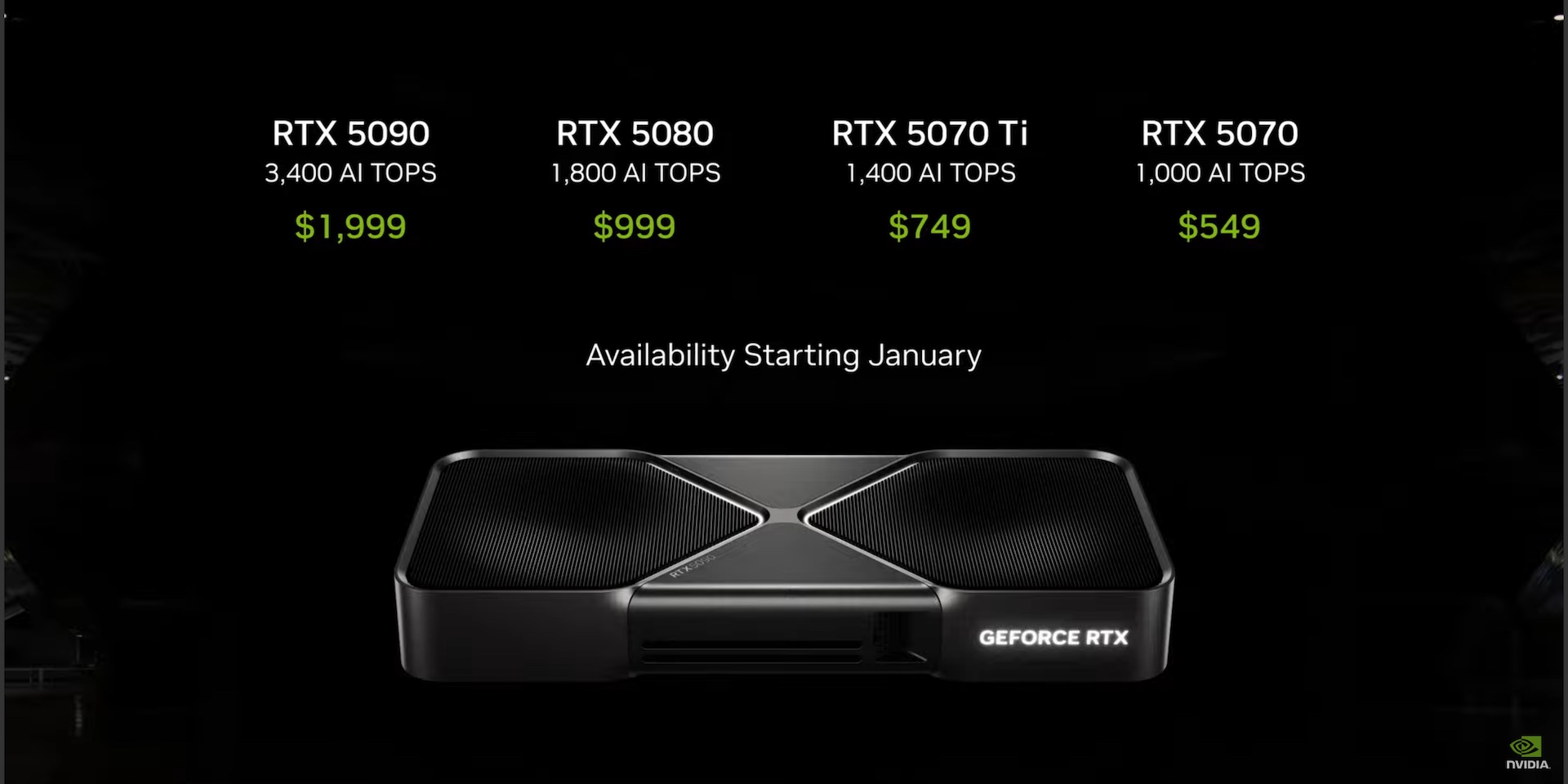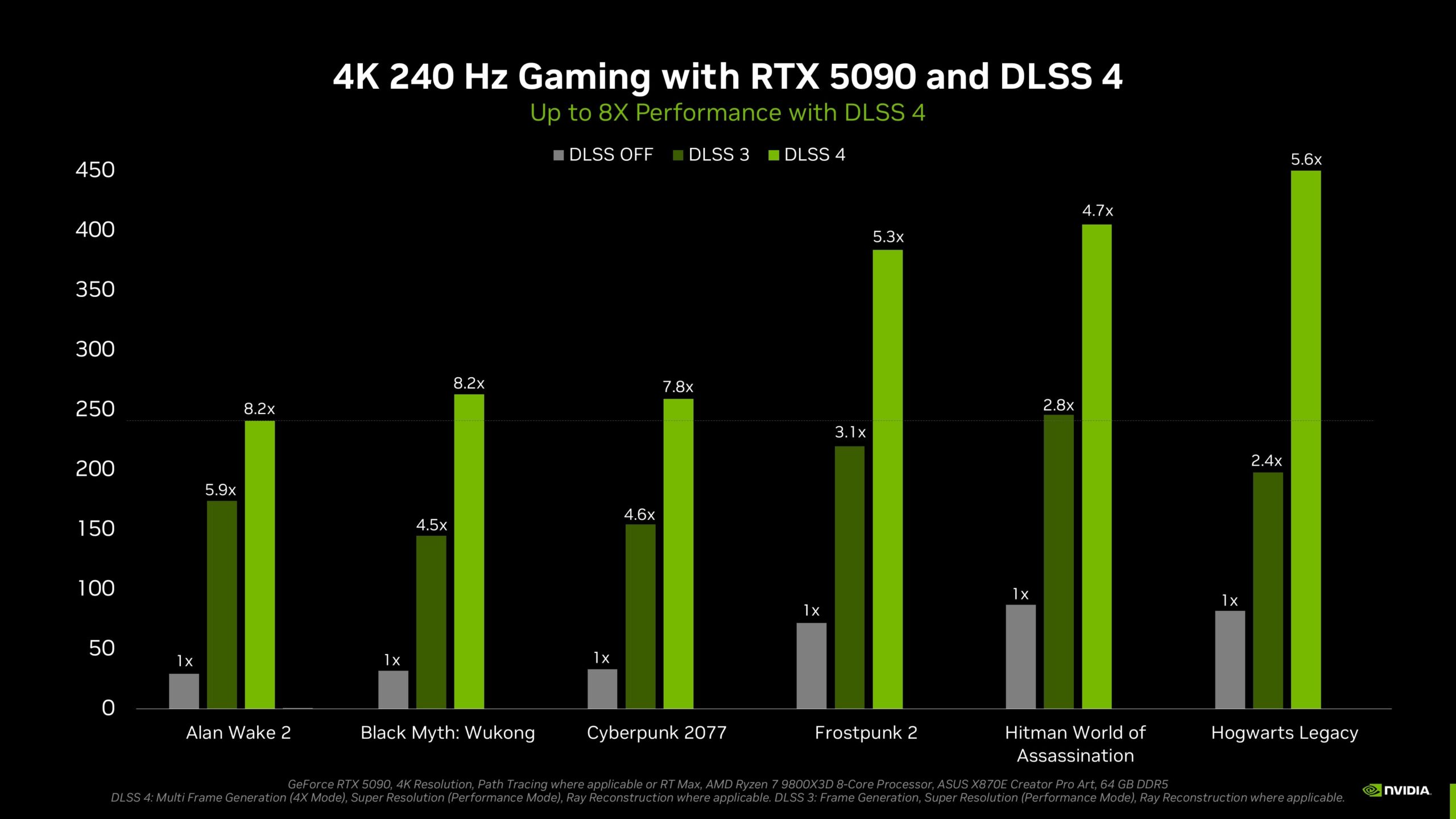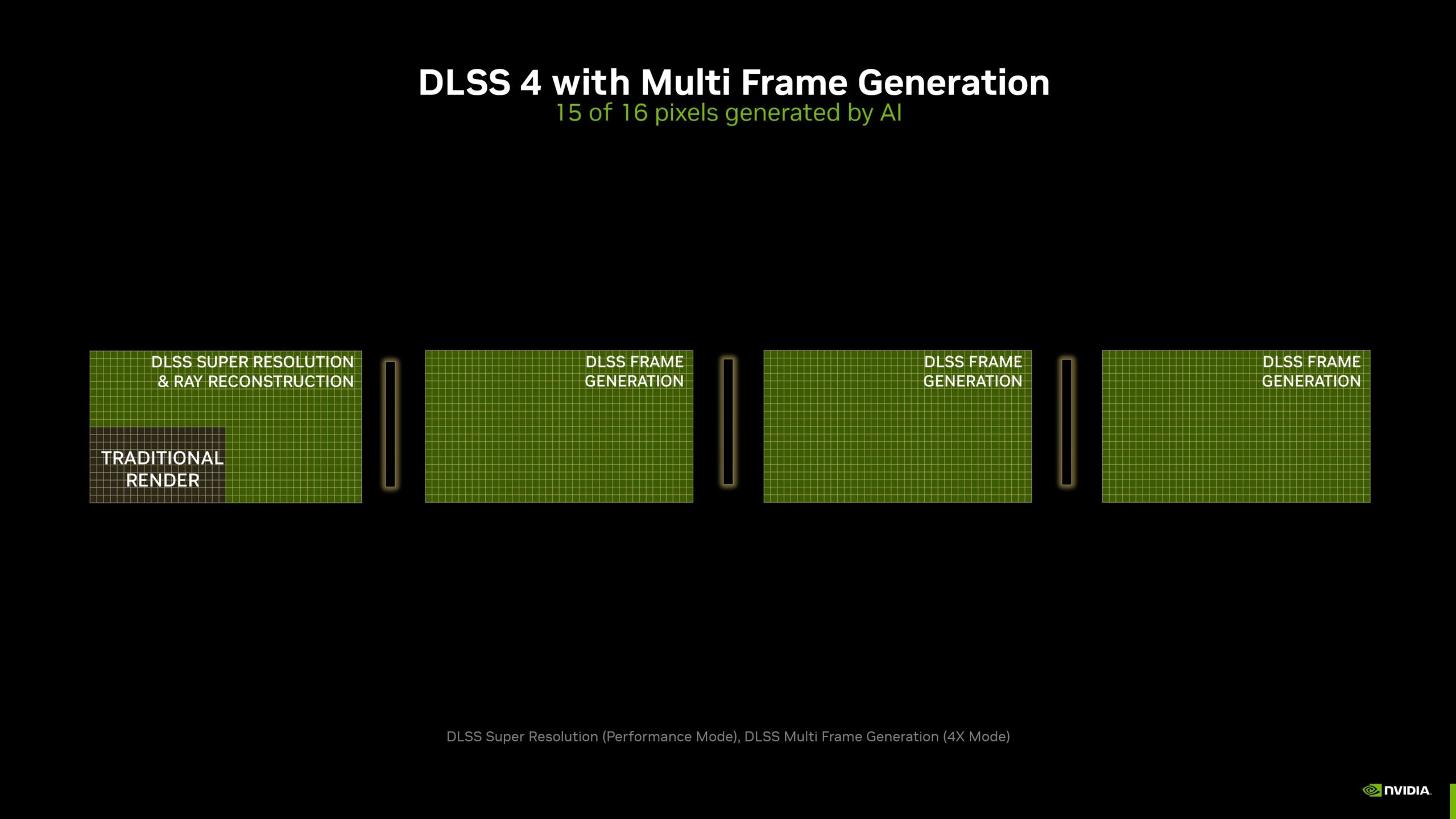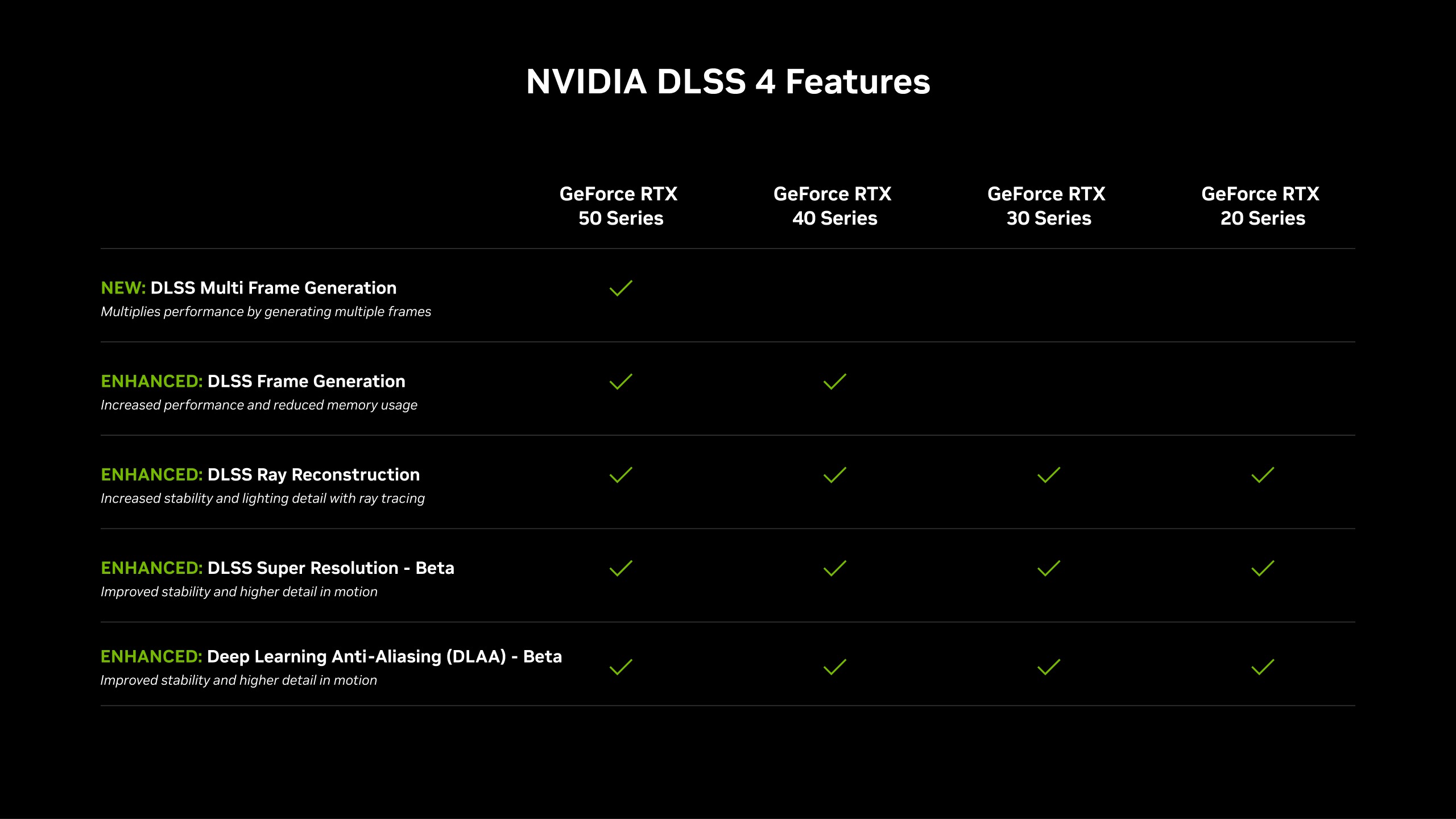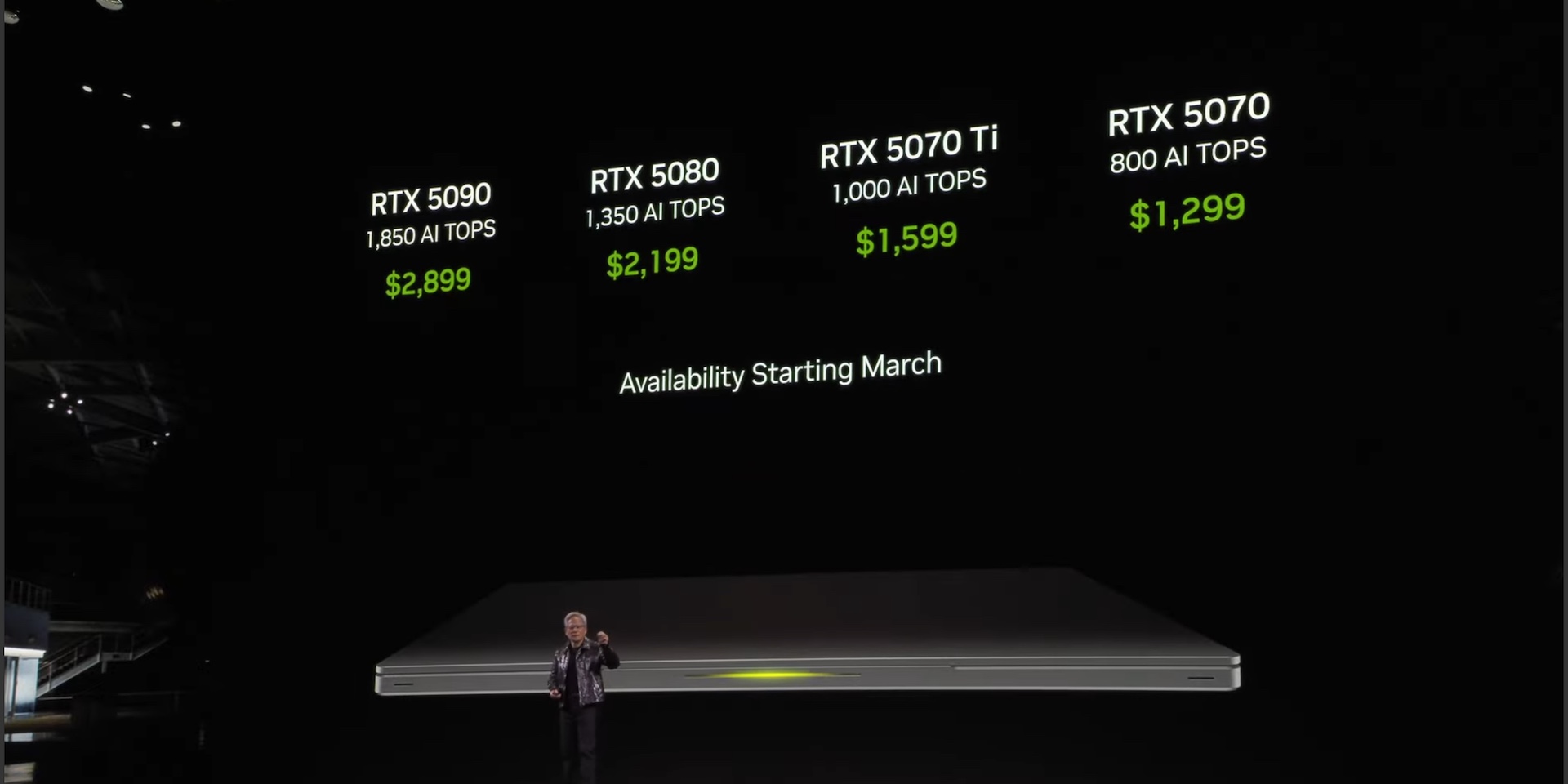Nvidia GeForce RTX 5070 Ti review: An RTX 4080 for $749, at least in theory
Nvidia’s RTX 50-series makes its first foray below the $1,000 mark starting this week, with the $749 RTX 5070 Ti—at least in theory.
The third-fastest card in the Blackwell GPU lineup, the 5070 Ti is still far from “reasonably priced” by historical standards (the 3070 Ti was $599 at launch). But it’s also $50 cheaper and a fair bit faster than the outgoing 4070 Ti Super and the older 4070 Ti. These are steps in the right direction, if small ones.
We’ll talk more about its performance shortly, but at a high level, the 5070 Ti’s performance falls in the same general range as the 4080 Super and the original RTX 4080, a card that launched for $1,199 just over two years ago. And it’s probably your floor for consistently playable native 4K gaming for those of you out there who don’t want to rely on DLSS or 4K upscaling to hit that resolution (it’s also probably all the GPU that most people will need for high-FPS 1440p, if that’s more your speed).
But it’s a card I’m ambivalent about! It’s close to 90 percent as fast as a 5080 for 75 percent of the price, at least if you go by Nvidia’s minimum list prices, which for the 5090 and 5080 have been mostly fictional so far. If you can find it at that price—and that’s a big “if,” since every $749 model is already out of stock across the board at Newegg—and you’re desperate to upgrade or are building a brand-new 4K gaming PC, you could do worse. But I wouldn’t spend more than $749 on it, and it might be worth waiting to see what AMD’s first 90-series Radeon cards look like in a couple weeks before you jump in.
Meet the GeForce RTX 5070 Ti
| RTX 5080 | RTX 4080 Super | RTX 5070 Ti | RTX 4070 Ti Super | RTX 4070 Ti | RTX 5070 | |
|---|---|---|---|---|---|---|
| CUDA Cores | 10,752 | 10,240 | 8,960 | 8,448 | 7,680 | 6,144 |
| Boost Clock | 2,617 MHz | 2,550 MHz | 2,452 MHz | 2,610 MHz | 2,610 MHz | 2,512 MHz |
| Memory Bus Width | 256-bit | 256-bit | 256-bit | 256-bit | 192-bit | 192-bit |
| Memory Bandwidth | 960 GB/s | 736 GB/s | 896 GB/s | 672 GB/s | 504 GB/s | 672 GB/s |
| Memory size | 16GB GDDR7 | 16GB GDDR6X | 16GB GDDR7 | 16GB GDDR6X | 12GB GDDR6X | 12GB GDDR7 |
| TGP | 360 W | 320 W | 300 W | 285 W | 285 W | 250 W |
Nvidia isn’t making a Founders Edition version of the 5070 Ti, so this time around our review unit is an Asus Prime GeForce RTX 5070 Ti provided by Asus and Nvidia. These third-party cards will deviate a little from the stock specs listed above, but factory overclocks tend to be inordinately mild, and done mostly so the GPU manufacturer can slap a big “overclocked” badge somewhere on the box. We tested this Asus card with its BIOS switch set to “performance” mode, which elevates the boost clock by an entire 30 MHz; you don’t need to be a math whiz to guess that a 1.2 percent overclock is not going to change performance much.
Compared to the 4070 Ti Super, the 5070 Ti brings two things to the table: a roughly 6 percent increase in CUDA cores and a 33 percent increase in memory bandwidth, courtesy of the switch from GDDR6X to GDDR7. The original 4070 Ti had even fewer CUDA cores, but most importantly for its 4K performance included just 12GB of memory on a 192-bit bus.
The 5070 Ti is based on the same GB203 GPU silicon as the 5080 series, but with 1,792 CUDA cores disabled. But there are a lot of similarities between the two, including the 16GB bank of GDDR7 and the 256-bit memory bus. It looks nothing like the yawning gap between the RTX 5090 and the RTX 5080, and the two cards’ similar-ish specs meant they weren’t too far away from each other in our testing. The 5070 Ti’s 300 W power requirement is also a bit lower than the 5080’s 360 W, but it’s pretty close to the 4080 and 4080 Super’s 320 W; in practice, the 5070 Ti draws about as much as the 4080 cards do under load.
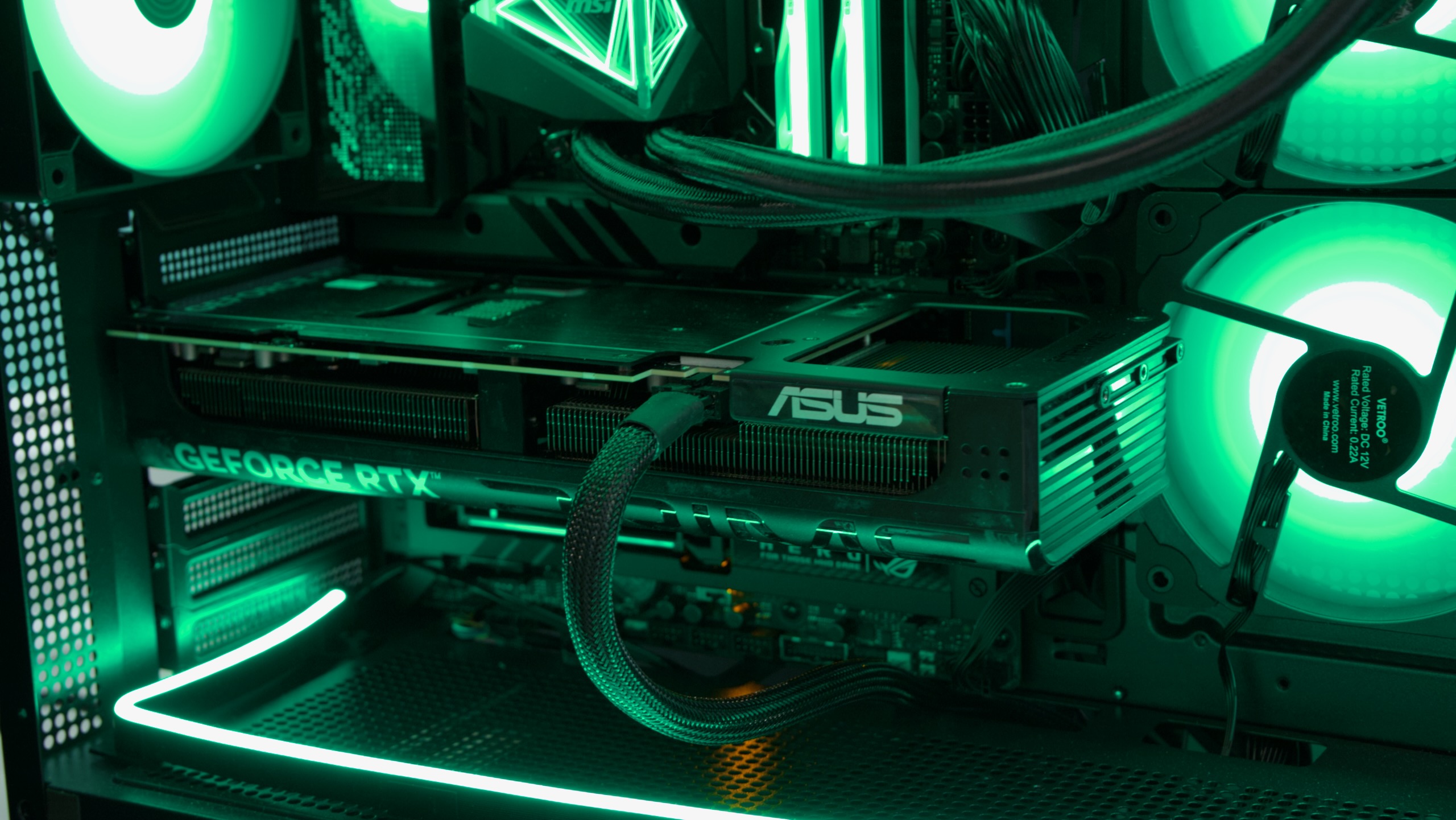
Asus’ design for its Prime RTX 5070 Ti is an inoffensive 2.5-slot, triple-fan card that should fit without a problem in most builds. Credit: Andrew Cunningham
As a Blackwell GPU, the 5070 Ti also supports Nvidia’s most-hyped addition to the 50-series: support for DLSS 4 and Multi-Frame Generation (MFG). We’ve already covered this in our 5090 and 5080 reviews, but the short version is that MFG works exactly like Frame Generation did in the 40-series, except that it can now insert up to three AI-generated frames in between natively rendered frames instead of just one.
Especially if you’re already running at a reasonably high frame rate, this can make things look a lot smoother on a high-refresh-rate monitor without introducing distractingly excessive lag or weird rendering errors. The feature is mainly controversial because Nvidia is comparing 50-series performance numbers with DLSS MFG enabled to older 40-series cards without DLSS MFG to make the 50-series cards seem a whole lot faster than they actually are.
We’ll publish some frame-generation numbers in our review, both using DLSS and (for AMD cards) FSR. But per usual, we’ll continue to focus on natively rendered performance—more relevant for all the games out there that don’t support frame generation or don’t benefit much from it, and more relevant because your base performance dictates how good your generated frames will look and feel anyway.
Testbed notes
We tested the 5070 Ti in the same updated testbed and with the same updated suite of games that we started using in our RTX 5090 review. The heart of the build is an AMD Ryzen 9800X3D, ensuring that our numbers are limited as little as possible by the CPU speed.
Per usual, we prioritize testing GPUs at resolutions that we think most people will use them for. For the 5070 Ti, that means both 4K and 1440p—this card is arguably still overkill for 1440p, but if you’re trying to hit 144 or 240 Hz (or even more) on a monitor, there’s a good case to be made for it. We also use a mix of ray-traced and non-ray-traced games. For the games we test with upscaling enabled, we use DLSS on Nvidia cards and the newest supported version of FSR (usually 2.x or 3.x) for AMD cards.
Though we’ve tested and re-tested multiple cards with recent drivers in our updated testbed, we don’t have a 4070 Ti Super, 4070 Ti, or 3070 Ti available to test with. We’ve provided some numbers for those GPUs from past reviews; these are from a PC running older drivers and a Ryzen 7 7800X3D instead of a 9800X3D, and we’ve put asterisks next to them in our charts. They should still paint a reasonably accurate picture of the older GPUs’ relative performance, but take them with that small grain of salt.
Performance and power
Despite including fewer CUDA cores than either version of the 4080, some combination of architectural improvements and memory bandwidth increases help the card keep pace with both 4080 cards almost perfectly. In most of our tests, it landed in the narrow strip right in between the 4080 and the 4080 Super, and its power consumption under load was also almost identical.
In every way that matters, the 5070 Ti is essentially an RTX 4080 that also supports DLSS Multi-Frame Generation. You can see why we’d be mildly enthusiastic about it at $749 but less and less impressed the closer the price creeps to $1,000.
Being close to a 4080 also means that the performance gap between the 5070 Ti and the 5080 is usually pretty small. In most of the games we tested, the 5070 Ti hovers right around 90 percent of the 5080’s performance.
The 5070 Ti is also around 60 percent as fast as an RTX 5090. The performance is a lot lower, but the price-to-performance ratio is a lot higher, possibly reflecting the fact that the 5070 Ti actually has other GPUs it has to compete with (in non-ray-traced games, the Radeon RX 7900 XTX generally keeps pace with the 5070 Ti, though at this late date it is mostly out of stock unless you’re willing to pay way more than you ought to for one).
Compared to the old 4070 Ti, the 5070 Ti can be between 20 and 50 percent faster at 4K, depending on how limited the game is by the 4070 Ti’s narrower memory bus and 12GB bank of RAM. The performance improvement over the 4070 Ti Super is more muted, ranging from as little as 8 percent to as much as 20 percent in our 4K tests. This is better than the RTX 5080 did relative to the RTX 4080 Super, but as a generational leap, it’s still pretty modest—it’s clear why Nvidia wants everyone to look at the Multi-Frame Generation numbers when making comparisons.
Waiting to put theory into practice
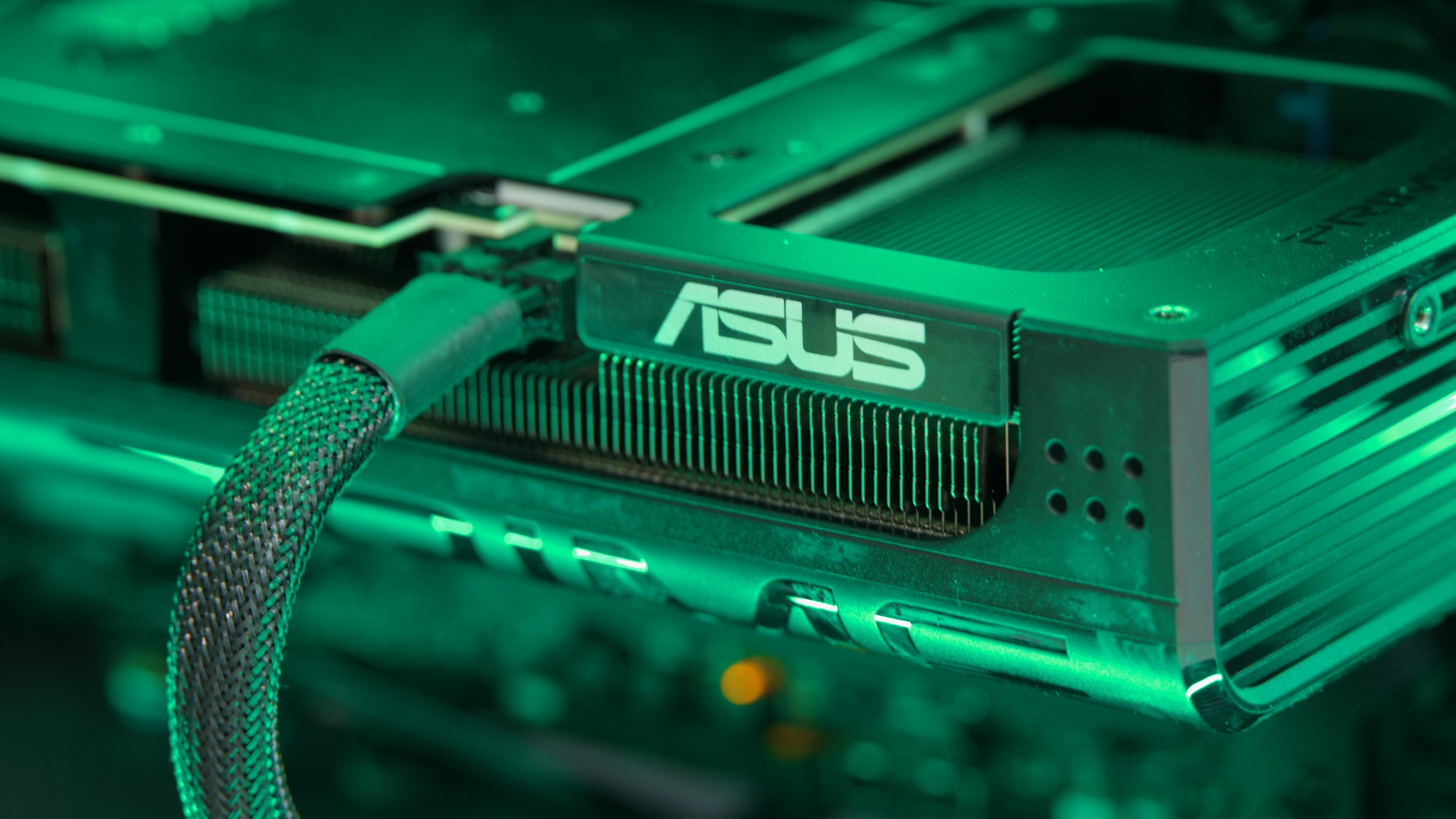
Asus’ RTX 5070 Ti, replete with 12-pin power plug. Credit: Andrew Cunningham
Being able to get RTX 4080-level performance for several hundred dollars less just a couple of years after the 4080 launched is kind of exciting, though that excitement is leavened by the still high-ish $749 price tag (again, assuming it’s actually available at or anywhere near that price). That certainly makes it feel more like a next-generation GPU than the RTX 5080 did—and whatever else you can say about it, the 5070 Ti certainly feels like a better buy than the 5080.
The 5070 Ti is a fast and 4K-capable graphics card, fast enough that you should be able to get some good results from all of Blackwell’s new frame-generation trickery if that’s something you want to play with. Its price-to-performance ratio does not thrill me, but if you do the math, it’s still a much better value than the 4070 Ti series was—particularly the original 4070 Ti, with the 12GB allotment of RAM that limited its usefulness and future-proofness at 4K.
Two reasons to hold off on buying a 5070 Ti, if you’re thinking about it: We’re waiting to see how AMD’s 9070 series GPUs shake out, and Nvidia’s 50-series launch so far has been kind of a mess, with low availability and price gouging both on retail sites and in the secondhand market. Pay much more than $749 for a 5070 Ti, and its delicate value proposition fades quickly. We should know more about the AMD cards in a couple of weeks. The supply situation, at least so far, seems like a problem that Nvidia can’t (or won’t) figure out how to solve.
The good
- For a starting price of $749, you get the approximate performance and power consumption of an RTX 4080, a GPU that cost $1,199 two years ago and $999 one year ago.
- Good 4K performance and great 1440p performance for those with high-refresh monitors.
- 16GB of RAM should be reasonably future-proof.
- Multi-Frame Generation is an interesting performance-boosting tool to have in your toolbox, even if it isn’t a cure-all for low framerates.
- Nvidia-specific benefits like DLSS support and CUDA.
The bad
- Not all that much faster than a 4070 Ti Super.
- $749 looks cheap compared to a $2,000 GPU, but it’s still enough money to buy a high-end game console or an entire 1080p gaming PC.
The ugly
- Pricing and availability for other 50-series GPUs to date have both been kind of a mess.
- Will you actually be able to get it for $749? Because it doesn’t make a ton of sense if it costs more than $749.
- Seriously, it’s been months since I reviewed a GPU that was actually widely available at its advertised price.
- And it’s not just the RTX 5090 or 5080, it’s low-end stuff like the Intel Arc B580 and B570, too.
- Is it high demand? Low supply? Scalpers and resellers hanging off the GPU market like the parasites they are? No one can say!
- It makes these reviews very hard to do.
- It also makes PC gaming, as a hobby, really difficult to get into if you aren’t into it already!
- It just makes me mad is all.
- If you’re reading this months from now and the GPUs actually are in stock at the list price, I hope this was helpful.
Andrew is a Senior Technology Reporter at Ars Technica, with a focus on consumer tech including computer hardware and in-depth reviews of operating systems like Windows and macOS. Andrew lives in Philadelphia and co-hosts a weekly book podcast called Overdue.
Nvidia GeForce RTX 5070 Ti review: An RTX 4080 for $749, at least in theory Read More »
